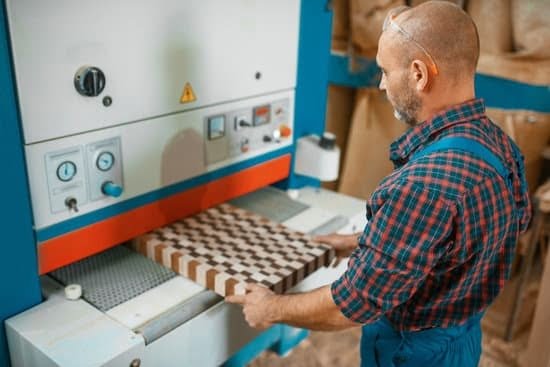Latex paint is a popular choice for interior walls and woodwork due to its durability and easy cleanup. However, accidental spills or splatters on woodwork can be a frustrating issue for homeowners. Knowing how to clean latex paint off woodwork is essential to maintaining the beauty and integrity of your wooden surfaces.
Woodwork, such as baseboards, trim, doors, and furniture, adds warmth and character to a home. It’s important to understand the proper cleaning techniques to avoid damaging the wood while effectively removing the paint.
In this article, we will explore step-by-step instructions for safely removing latex paint from woodwork, recommended tools and materials for the cleaning process, tips and tricks for stubborn stains, refinishing and restoring the woodwork after cleaning, as well as preventive measures to avoid future paint spills.
Whether you are a DIY enthusiast or simply looking to maintain the natural beauty of your home’s woodwork, this guide will provide valuable information on how to tackle this common household problem with confidence. By following these techniques and best practices, you can ensure that your woodwork remains in pristine condition for years to come.
Understanding the Importance of Proper Cleaning Techniques
Latex paint is a popular choice for woodwork due to its durability, ease of use, and quick drying time. However, accidental spills and splatters can occur during painting, leaving unsightly stains on the woodwork. It is important to understand the significance of using proper cleaning techniques to effectively remove latex paint without causing damage to the wood surface.
Proper cleaning techniques are essential for preserving the beauty and integrity of the woodwork. Using the wrong cleaning method or harsh chemicals can result in permanent damage such as discoloration or stripping the finish from the wood. Additionally, neglecting to clean latex paint spills promptly can lead to hardened stains that are difficult to remove, requiring more aggressive methods that can harm the wood surface.
To ensure successful removal of latex paint from woodwork without causing damage, it is crucial to follow a step-by-step guide using gentle yet effective cleaning solutions and techniques. In the following section, we will provide a comprehensive guide on how to safely remove latex paint from woodwork and restore its original appearance.
- Begin by gently scraping off any excess latex paint using a plastic putty knife or scraper.
- Create a gentle cleaning solution by mixing warm water with mild dish soap or a specialized wood cleaner.
- Use a soft sponge or cloth dampened with the cleaning solution to gently scrub the affected area in a circular motion.
- Rinse the area with clean water and dry thoroughly with a soft towel.
5.Apply a small amount of rubbing alcohol on stubborn stains to loosen the paint before repeating the cleaning process if necessary.
By following these steps carefully, you can safely and effectively remove latex paint from woodwork without causing harm to its surface.
Step-by-Step Guide on Removing Latex Paint From Woodwork
Latex paint is a popular choice for many DIY home improvement projects due to its easy application and fast drying time. However, accidents can happen, and paint spills or splatters on woodwork are not uncommon. Knowing how to properly clean latex paint off woodwork is essential to maintaining the beauty and integrity of your wooden surfaces.
To ensure the successful removal of latex paint from woodwork, it is important to follow a systematic step-by-step guide. Here are the recommended steps for removing latex paint from woodwork:
1. Scrape off excess paint: Use a plastic putty knife or a razor blade to gently scrape off any excess latex paint from the surface of the woodwork. Be careful not to apply too much pressure, as this could cause damage to the wood.
2. Apply rubbing alcohol: Dampen a clean cloth with rubbing alcohol and gently dab at the painted area. The rubbing alcohol will help loosen and dissolve the paint, making it easier to remove.
3. Use soapy water: Mix warm water with a small amount of mild dish soap and use a sponge or soft-bristled brush to scrub the remaining paint spots. Rinse the area with clean water and pat dry with a towel.
By following these steps, you can effectively remove latex paint from woodwork without causing damage to the surface of the wood.
In addition to following the step-by-step guide above, using the right tools and materials can greatly facilitate the cleaning process and prevent further damage to your woodwork. Some recommended tools and materials for cleaning latex paint off woodwork include:
With these tools and materials in hand, you can ensure that you have everything you need to effectively remove latex paint from your woodwork.
Recommended Tools and Materials for the Cleaning Process
When it comes to cleaning latex paint off woodwork, having the right tools and materials is essential for a successful and efficient process. Here are some recommended items to have on hand:
Tools
A putty knife or scraper can be useful for gently lifting and removing dried paint from the surface of the woodwork. Additionally, a soft-bristled brush can help in loosening any stubborn paint particles without damaging the wood. For more delicate areas or intricate details, consider using a toothbrush or cotton swabs to carefully clean those hard-to-reach spots.
Materials
To effectively remove latex paint from woodwork, you’ll need some key materials such as denatured alcohol, which can help dissolve and break down the paint for easier removal. Mineral spirits or turpentine are also effective solvents for this purpose.
Additionally, having a supply of clean rags or paper towels on hand will be essential for wiping away dissolved paint and excess liquid. Finally, consider using a gentle wood cleaner or mild soap solution to thoroughly clean the woodwork after removing the paint.
It’s important to note that when working with these solvents and cleaners, always wear protective gloves and work in a well-ventilated area to avoid inhaling fumes. In addition, be sure to read and follow all safety instructions provided by the manufacturers of these products to ensure safe usage. By having the right tools and materials at your disposal, you can effectively tackle the task of removing latex paint from woodwork with ease and precision.
Tips and Tricks for Stubborn Stains
When it comes to removing latex paint from woodwork, stubborn stains can be a common issue. However, with the right techniques and a little patience, you can effectively tackle even the toughest of stains. One effective method is to use a mixture of warm water and mild soap or detergent. Gently scrub the stained area with a soft-bristled brush or sponge, being careful not to damage the wood surface.
Another useful tip for dealing with stubborn stains is to apply a solvent such as rubbing alcohol or acetone to the affected area. Let it sit for a few minutes to soften the paint, then carefully scrape it away using a putty knife or plastic scraper. Be sure to test any solvent in an inconspicuous area first to ensure that it does not cause any damage to the woodwork.
For particularly resilient stains, consider using a commercial paint remover or stripper specifically designed for latex paint. Follow the manufacturer’s instructions carefully, and always wear protective gear such as gloves and goggles when working with harsh chemicals.
| Recommended Cleaning Tools | Materials Needed |
|---|---|
| Soft-bristled brush or sponge | Mild soap or detergent |
| Rubbing alcohol or acetone | Plastic scraper |
| Commercial paint remover/stripper | Protective gear (gloves, goggles) |
Whether you’re dealing with fresh spills or old, dried-on stains, these tips will help you achieve a clean and pristine finish on your woodwork. By taking the time to properly address stubborn stains, you can ensure that your woodwork maintains its beauty and integrity for years to come.
Remember that prevention is key when it comes to maintaining your woodwork’s appearance. Always cover surfaces with drop cloths before painting, and take care to immediately wipe up any spills or splatters. By following these tips and tricks for stubborn stains, as well as adopting preventive measures, you can keep your woodwork looking its best at all times.
Refinishing and Restoring the Woodwork After Cleaning
After successfully removing the latex paint from woodwork, the next step is to refinish and restore the wood to its original beauty. This is an important part of the cleaning process as it not only removes any remaining paint residue but also helps to protect and maintain the woodwork for years to come.
Sanding the Woodwork
One of the first steps in refinishing woodwork after cleaning off latex paint is sanding. Use a fine-grit sandpaper to remove any remaining paint particles and smooth out the surface of the wood. Make sure to sand in the direction of the wood grain for an even finish.
Applying Wood Stain or Sealant
Once the wood has been sanded, consider applying a wood stain or sealant to enhance its appearance and protect it from future damage. Choose a product that matches the desired color and finish of your woodwork, and follow the manufacturer’s instructions for application.
Polishing and Buffing
Finally, after applying a stain or sealant, consider polishing and buffing the woodwork to give it a beautiful shine. Use a clean cloth to apply a furniture polish or wax, then buff it with another clean cloth until you achieve a lustrous finish.
By following these steps for refinishing and restoring woodwork after cleaning off latex paint, you can ensure that your wood surfaces remain beautiful and well-maintained. Regular upkeep will extend their lifespan while preserving their natural beauty.
As you can see, knowing how to clean latex paint off woodwork is just one part of maintaining its integrity. Refinishing and restoring are crucial to ensure that your wood surfaces remain looking their best for years to come.
Preventive Measures to Avoid Future Paint Spills
One of the best ways to avoid future paint spills on woodwork is by taking the necessary precautions before starting any painting project. This includes properly covering and protecting the surrounding woodwork, floors, and furniture with drop cloths or plastic sheets. It’s also important to use painter’s tape to mask off areas that you don’t want to be painted.
Another preventive measure is to work in a well-ventilated area, as this can help minimize the chances of accidental spills or splatters. Additionally, it’s essential to keep a clean and organized work environment. By keeping your workspace clutter-free, you’ll reduce the likelihood of knocking over paint cans or brushes.
Furthermore, always make sure that paint cans are securely closed when not in use. Store them in a safe location away from high traffic areas to prevent them from being accidentally kicked over. Lastly, it’s crucial to handle paint and painting tools with care and attention to minimize the risk of spills and accidents.
| Preventive Measure | Description |
|---|---|
| Properly cover and protect | Use drop cloths or plastic sheets to protect woodwork, floors, and furniture. |
| Work in a well-ventilated area | This helps minimize accidental spills or splatters. |
| Keep a clean and organized work environment | Reduces the likelihood of knocking over paint cans or brushes. |
Conclusion
In conclusion, knowing how to clean latex paint off woodwork is essential for maintaining the beauty and integrity of your wooden surfaces. By understanding the importance of proper cleaning techniques and following a step-by-step guide, you can effectively remove latex paint without causing damage to the wood. With the right tools and materials, along with some tips and tricks for stubborn stains, you can restore the woodwork to its original condition.
After successfully removing the latex paint from the woodwork, it is important to consider refinishing and restoring the surface. This may involve sanding, staining, and sealing the wood to enhance its appearance and protect it from future spills. Taking these additional steps will not only improve the visual appeal but also prolong the life of your woodwork.
Additionally, implementing preventive measures can help avoid future paint spills on woodwork. Using drop cloths or protective barriers during painting projects and promptly cleaning up any accidental spills can significantly reduce the need for extensive cleaning in the future. By incorporating these practices into your routine maintenance, you can keep your woodwork looking pristine for years to come.
Frequently Asked Questions
How Do I Remove Dried Latex Paint From Woodwork?
Removing dried latex paint from woodwork can be done by using a combination of scraping, sanding, and using a solvent like rubbing alcohol or mineral spirits. It’s important to be patient and gentle to avoid damaging the wood underneath.
What Is the Best Product to Remove Latex Paint From Wood?
One of the best products to remove latex paint from wood is a commercial paint remover specifically designed for this purpose. These products typically come in gel form and work by softening the paint so it can be easily scraped away without damaging the wood.
How Do You Remove Paint From Wood Without Damaging Wood?
To remove paint from wood without damaging the wood itself, it’s important to use gentle methods such as scraping with a plastic putty knife or using a chemical paint stripper that is safe for use on wood. Avoid harsh abrasives that can cause scratches or dents in the wood surface.

Hi everyone! I’m a woodworker and blogger, and this is my woodworking blog. In my blog, I share tips and tricks for woodworkers of all skill levels, as well as project ideas that you can try yourself.





